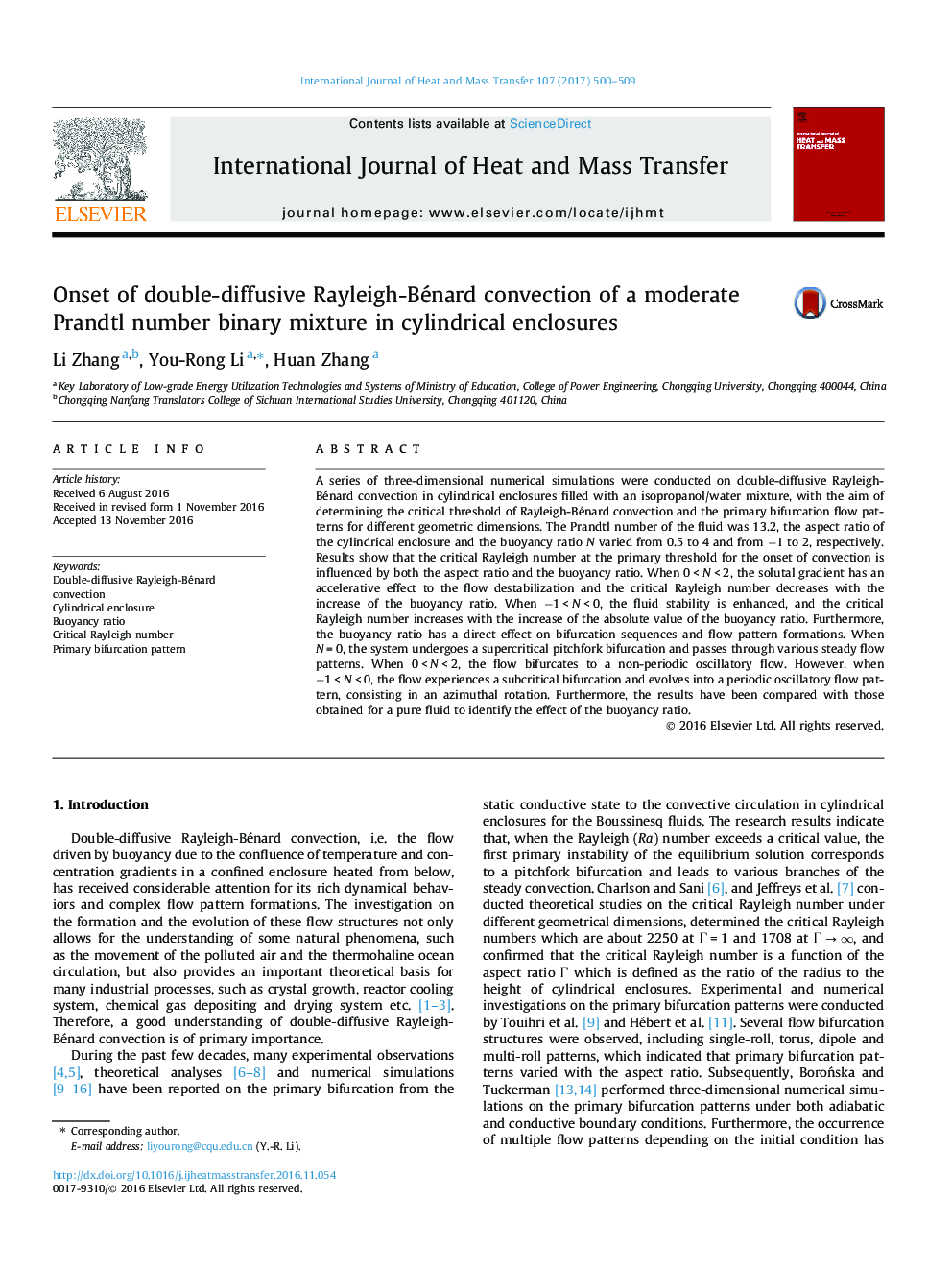| Article ID | Journal | Published Year | Pages | File Type |
|---|---|---|---|---|
| 4994606 | International Journal of Heat and Mass Transfer | 2017 | 10 Pages |
Abstract
A series of three-dimensional numerical simulations were conducted on double-diffusive Rayleigh-Bénard convection in cylindrical enclosures filled with an isopropanol/water mixture, with the aim of determining the critical threshold of Rayleigh-Bénard convection and the primary bifurcation flow patterns for different geometric dimensions. The Prandtl number of the fluid was 13.2, the aspect ratio of the cylindrical enclosure and the buoyancy ratio N varied from 0.5 to 4 and from â1 to 2, respectively. Results show that the critical Rayleigh number at the primary threshold for the onset of convection is influenced by both the aspect ratio and the buoyancy ratio. When 0Â <Â NÂ <Â 2, the solutal gradient has an accelerative effect to the flow destabilization and the critical Rayleigh number decreases with the increase of the buoyancy ratio. When â1Â <Â NÂ <Â 0, the fluid stability is enhanced, and the critical Rayleigh number increases with the increase of the absolute value of the buoyancy ratio. Furthermore, the buoyancy ratio has a direct effect on bifurcation sequences and flow pattern formations. When NÂ =Â 0, the system undergoes a supercritical pitchfork bifurcation and passes through various steady flow patterns. When 0Â <Â NÂ <Â 2, the flow bifurcates to a non-periodic oscillatory flow. However, when â1Â <Â NÂ <Â 0, the flow experiences a subcritical bifurcation and evolves into a periodic oscillatory flow pattern, consisting in an azimuthal rotation. Furthermore, the results have been compared with those obtained for a pure fluid to identify the effect of the buoyancy ratio.
Related Topics
Physical Sciences and Engineering
Chemical Engineering
Fluid Flow and Transfer Processes
Authors
Li Zhang, You-Rong Li, Huan Zhang,
